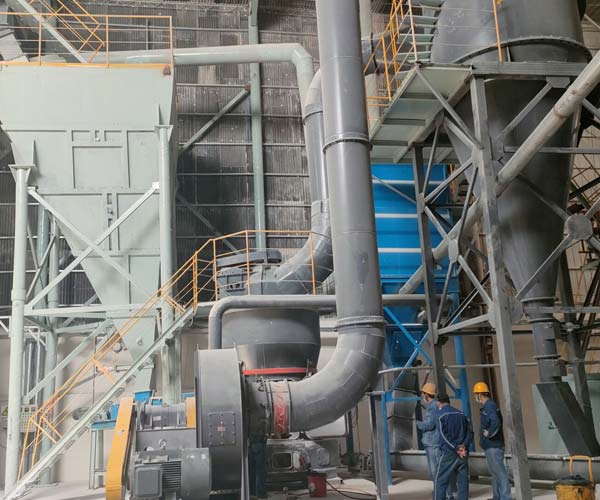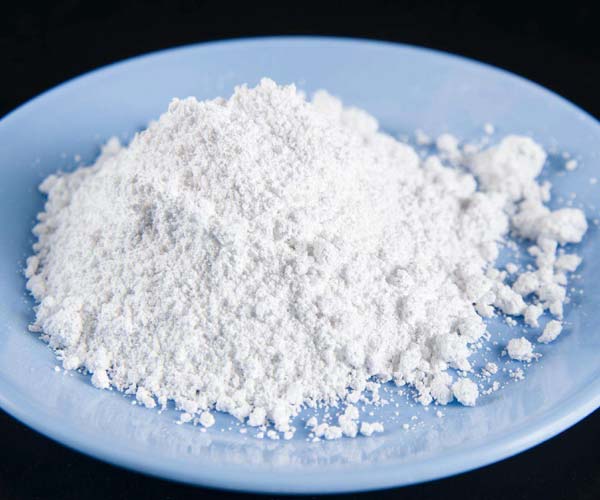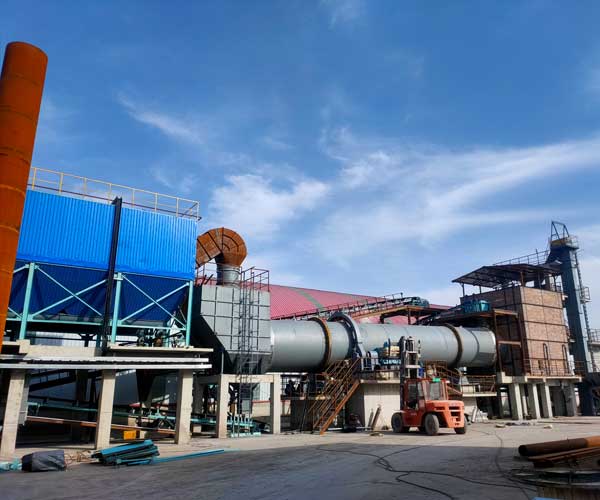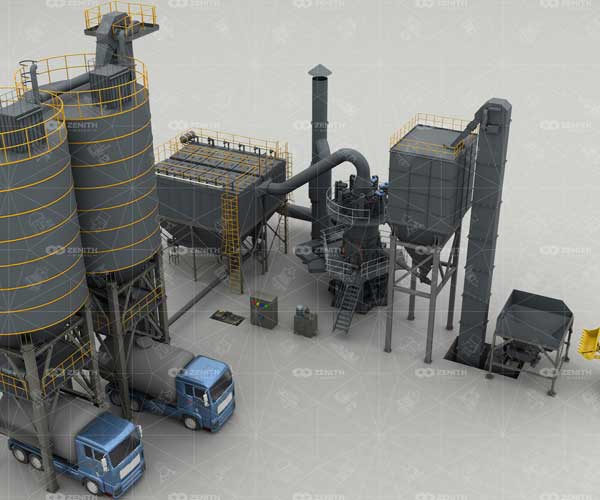
Gypsum powder making machines serve as the backbone of the gypsum transformation process, taking raw material and converting it into a versatile and essential product with myriad applications. From crushers that reduce the initial size of raw gypsum to mills that grind it into fine powder, calciners that facilitate chemical conversion, and classifiers that ensure precise particle size distribution, these machines work in unison to produce high-quality gypsum powder.
24 Online Service

As we delve into the world of gypsum powder, its significance in construction becomes evident, showcasing how its properties and applications make it an indispensable ingredient in the building industry.
Its unique properties have made it an invaluable resource in the construction industry. One of the key characteristics of gypsum is its fire-resistant nature, making it an ideal choice for applications where fire safety is paramount. Additionally, gypsum’s ability to regulate indoor humidity levels contributes to a more comfortable and healthier living environment.
However, the most remarkable aspect of gypsum lies in its transformation from raw mineral to finely ground powder, which opens up a world of possibilities in construction applications.
Gypsum powder, obtained through the process of calcination where raw gypsum is heated to remove excess water, is the cornerstone of gypsum board production. Also known as drywall or plasterboard, gypsum boards have revolutionized the construction industry by offering a lightweight, easy-to-install, and highly versatile solution for interior walls and ceilings.
The specific properties of gypsum powder that make it an ideal material for gypsum board production are:
Gypsum board is inherently fire-resistant due to gypsum’s natural properties. When gypsum is heated, it releases water molecules, effectively retarding the spread of flames. This inherent fire resistance adds a layer of safety to buildings, making gypsum board a preferred choice for fire-rated walls and partitions.
Gypsum’s dense structure and ability to absorb sound waves make gypsum boards excellent for sound insulation. This property is crucial in creating acoustically comfortable spaces, such as recording studios, theaters, and residential areas.
Gypsum powder can be easily mixed with water to form a paste that can be molded into different shapes and sizes. This workability allows for intricate designs and customization, providing architects and designers with creative freedom.
Gypsum boards have high durability and resistance to wear and tear, making them suitable for high-traffic areas. Their ability to maintain their structural integrity over time ensures that buildings remain in good condition for years.

From crafting sturdy plaster to producing resilient building materials, gypsum powder serves as a linchpin in countless projects. However, the journey from raw gypsum to a fine powder of impeccable quality involves a sophisticated interplay of machinery and processes. Gypsum powder making machines play a pivotal role in this transformation, converting raw gypsum into a versatile material that drives innovation across various industries.
Gypsum, a mineral abundant in nature, is primarily composed of calcium sulfate dihydrate. Its uses range from constructing ornate ceilings to manufacturing fire-resistant panels and molds. The process of converting raw gypsum into refined powder is a meticulously orchestrated endeavor, relying on various specialized machines. These machines not only facilitate efficiency but also ensure the final product’s superior quality.
The journey begins with crushers, which break down the raw gypsum into smaller, manageable pieces. These crushers come in various designs, each tailored to specific requirements. Whether it’s a jaw crusher or a hammer mill, their role is to reduce the size of the gypsum, preparing it for subsequent processing.
Once the gypsum is appropriately reduced in size, it enters the milling stage. Gypsum mills grind the crushed material into a fine powder. Two common types of mills used in gypsum powder production are ball mills and Raymond mills. Ball mills use rotating cylinders to apply both impact and attrition forces, resulting in finely ground gypsum. Raymond mills, on the other hand, use rollers to crush and grind the material, ensuring a more uniform and consistent output.
The next crucial step involves subjecting the milled gypsum powder to elevated temperatures in a process called calcination. Calcination removes the water content from the gypsum, transforming it into a chemically stable form known as calcium sulfate hemihydrate, or plaster of Paris. Vertical and rotary calciners are commonly used, with the latter offering efficient heat transfer and uniform heating.
After calcination, the resulting plaster of Paris requires classification to achieve the desired particle size distribution. Classifiers separate the particles based on their size, ensuring that the gypsum powder meets the specific requirements of various applications. Air classifiers, cyclone separators, and vibrating screens are commonly employed in this phase.
The journey from raw gypsum to high-quality powder is a harmonious symphony of interconnected processes. These machines work collaboratively to ensure the transformation is both efficient and precise.
The process begins with raw gypsum entering the crushers, where it undergoes size reduction. This preliminary stage prepares the material for the milling process, which follows next. Mills further pulverize the gypsum, resulting in a finely ground powder that is ready for calcination.
In the calcination phase, the plaster of Paris emerges as a result of controlled heating. Calciners play a pivotal role by providing the necessary thermal environment for the chemical conversion, resulting in the removal of water molecules.
Subsequently, the classified gypsum powder is now ready for packaging or further processing. The final particle size and distribution are critical factors that determine the powder’s performance in various applications, ranging from construction materials to medical casting products.

This finely powdered substance is derived from natural gypsum rock or synthetic sources and is processed through a series of intricate steps to ensure its quality and usability.
The journey of gypsum powder begins with the selection of raw materials. Natural gypsum rock is commonly used, as it contains the essential calcium sulfate compounds needed for the production process. Alternatively, synthetic gypsum can be used, generated as a byproduct from various industrial processes like flue gas desulfurization in power plants. This sustainable approach reduces the environmental impact of mining natural gypsum.
The raw material is first crushed into smaller particles to facilitate further processing. The crushed material is then heated in a calcination process to remove excess moisture and chemically combined water. During this calcination step, the raw gypsum is exposed to high temperatures, causing it to lose water molecules and transform into a dry powder known as hemihydrate.
The hemihydrate powder obtained from the calcination process is commonly known as Plaster of Paris (POP). It possesses a unique property of rehydrating to its original gypsum state when mixed with water, making it invaluable in construction and crafting applications. The transformation from gypsum to hemihydrate is reversible, allowing the powder to regain its original properties when mixed with water.
After the calcination process, the hemihydrate powder is subjected to grinding and milling to achieve the desired particle size. The finer the particles, the smoother the resulting gypsum paste or product will be. Modern milling techniques utilize advanced machinery to precisely control the particle size distribution, ensuring consistent and high-quality gypsum powder.
To create a workable paste or product, gypsum powder is mixed with water in a process known as hydration. The water molecules reattach to the hemihydrate particles, causing the mixture to set and harden. This is crucial for applications in construction, where gypsum-based materials are used for plastering walls and creating architectural details.
Several factors play a pivotal role in shaping the gypsum powder production process and determining the quality of the final product. These factors include temperature, pressure, and residence time.
The calcination process involves subjecting raw gypsum to high temperatures, which drives off the chemically combined water. Proper temperature control is essential to ensure complete dehydration without causing undesirable chemical reactions or compromising the quality of the hemihydrate.
While pressure may not be a primary factor in the production process, it can impact the quality of the final product indirectly. In certain applications, such as in gypsum board production, specific pressures are applied to ensure proper adhesion between the gypsum core and paper facings.
The duration for which the raw materials are subjected to various stages in the production process significantly influences the quality of the final product. Optimal residence times are critical to achieving the desired degree of dehydration and particle size distribution.

Gypsum boards, commonly known as drywall or plasterboards, have become an indispensable part of modern construction. These versatile building materials are widely used for creating interior walls and ceilings due to their ease of installation, cost-effectiveness, and fire-resistant properties. However, beneath the surface of this seemingly simple product lies a crucial factor that significantly determines its quality – the quality of gypsum powder used in its production. The quality of gypsum powder plays a pivotal role in shaping the strength, durability, and overall performance of gypsum boards.
Gypsum powder is the primary ingredient in the manufacturing of gypsum boards. It is obtained by heating gypsum rock to remove the water content, resulting in a fine powder that serves as the base material for producing boards. The quality of this powder has a profound impact on the end product’s attributes, including strength, durability, sound insulation, and fire resistance.
One of the critical aspects of high-quality gypsum powder is a consistent particle size distribution. Irregular particle sizes can lead to uneven mixing and distribution during the board production process. This inconsistency can result in weak points within the gypsum board, reducing its overall strength. Smaller particles contribute to better adhesion, while larger particles offer enhanced structural integrity. When the particle sizes are well-balanced, the gypsum powder can be mixed uniformly with other additives, leading to a homogeneous mixture that yields strong and resilient gypsum boards.
The purity of gypsum powder is another pivotal factor in ensuring top-notch gypsum board quality. Impurities present in the gypsum powder can adversely affect the chemical reactions that occur during the board’s setting and hardening process. These impurities can weaken the board’s internal structure and reduce its fire resistance properties. High-quality gypsum powder with minimal impurities ensures that the chemical reactions proceed optimally, resulting in gypsum boards that meet or exceed industry standards for strength and durability.
The relationship between gypsum powder quality and gypsum board strength cannot be overstated. Gypsum boards manufactured using high-quality gypsum powder exhibit superior load-bearing capabilities and resistance to impacts. The consistent particle size and purity contribute to a homogenous structure that reduces the risk of weak spots or inconsistencies in the board. This translates to gypsum boards that can withstand the test of time and maintain their structural integrity even under adverse conditions.
Several case studies underscore the difference in gypsum board quality achieved through the use of high-quality gypsum powder:
In a controlled experiment, gypsum boards were produced using both standard and high-quality gypsum powder. The boards manufactured with high-quality powder exhibited a 15% increase in flexural strength and a 20% increase in impact resistance compared to the boards made with standard powder. This exemplifies how consistent particle size and purity directly contribute to enhanced strength and durability.
A manufacturer specializing in fire-resistant gypsum boards switched to a high-purity gypsum powder for their production. The resulting boards not only met but exceeded fire resistance standards, showcasing the significant impact of gypsum powder quality on specific performance attributes.
Our Projects
Copyright © ZENITH, All Right Reserved.
